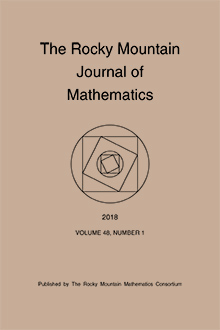Abstract
Let $R$ be a commutative ring with identity, and let $R[x]$ be the collection of polynomials with coefficients in~$R$. We observe that there are many multiplications in $R[x]$ such that, together with the usual addition, $R[x]$ becomes a ring that contains $R$ as a subring. These multiplications belong to a class of functions $\lambda $ from $\mathbb {N}_0$ to $\mathbb {N}$. The trivial case when $\lambda (i) = 1$ for all $i$ gives the usual polynomial ring. Among nontrivial cases, there is an important one, namely, the case when $\lambda (i) = i!$ for all $i$. For this case, it gives the well-known Hurwitz polynomial ring $R_H[x]$. In this paper, we study Krull dimension and unique factorization in $R_H[x]$. We show in general that $\dim R \leq \dim R_H[x] \leq 2\dim R +1$. When the ring $R$ is Noetherian we prove that $\dim R \leq \dim R_H[x] \leq \dim R+1$. A condition for the ring $R$ is also given in order to determine whether $\dim R_H[x] = \dim R$ or $\dim R_H[x] = \dim R +1$ in this case. We show that $R_H[x]$ is a unique factorization domain, respectively, a Krull domain, if and only if $R$ is a unique factorization domain, respectively, a Krull domain, containing all of the rational numbers.
Citation
Phan Thanh Toan. Byung Gyun Kang. "Krull dimension and unique factorization in Hurwitz polynomial rings." Rocky Mountain J. Math. 47 (4) 1317 - 1332, 2017. https://doi.org/10.1216/RMJ-2017-47-4-1317
Information





